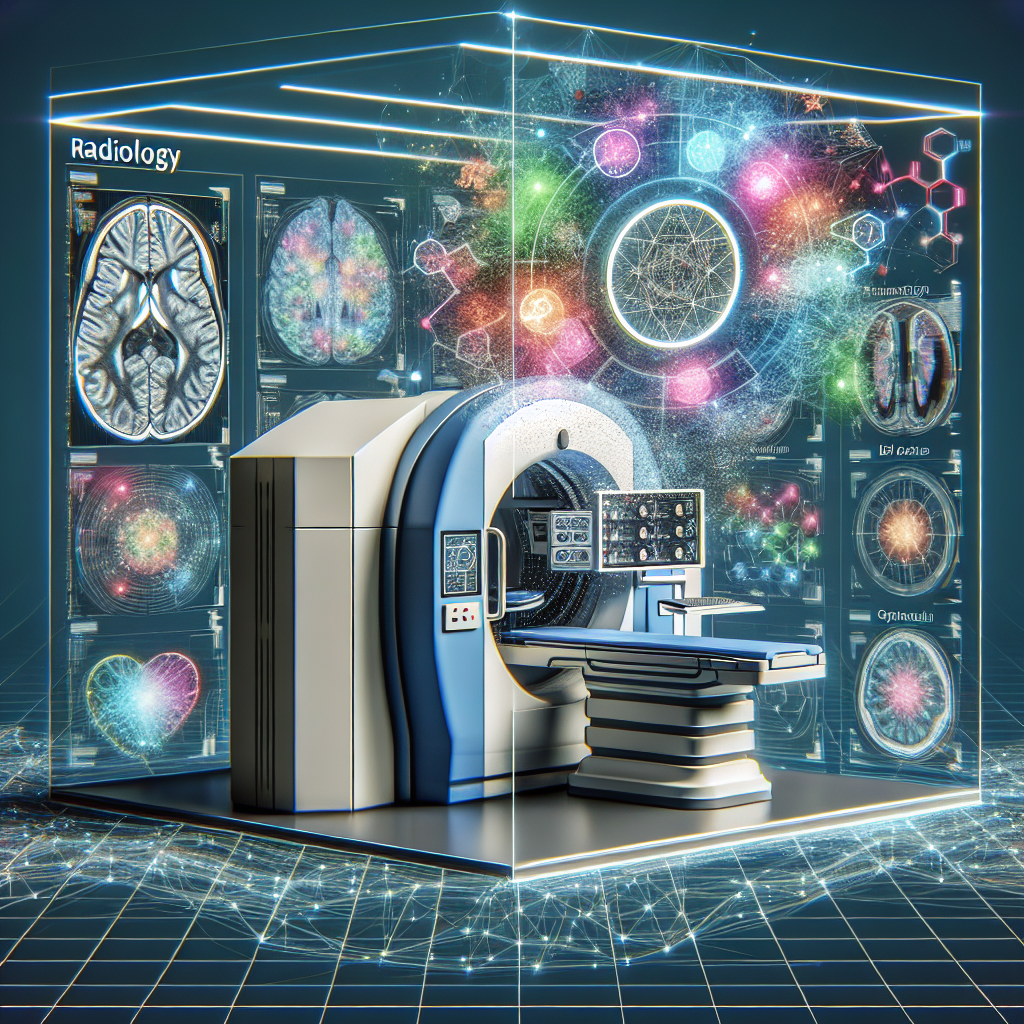Artificial intelligence (AI) has been transforming the field of radiology by enhancing imaging technology and improving diagnostic accuracy. Radiology is a medical specialty that uses medical imaging technologies such as X-rays, CT scans, MRI scans, and ultrasound to diagnose and treat diseases. With the help of AI, radiologists can now analyze and interpret medical images more efficiently and accurately, leading to better patient outcomes.
AI algorithms are trained using large datasets of medical images to recognize patterns and abnormalities that may be missed by human radiologists. These algorithms can assist radiologists in detecting and diagnosing diseases such as cancer, fractures, and infections. By automating routine tasks, AI can help radiologists focus on more complex cases and provide timely and accurate diagnoses.
One of the key advantages of AI in radiology is its ability to reduce the time it takes to interpret medical images. AI algorithms can analyze images quickly and provide radiologists with actionable insights in real-time. This can lead to faster diagnoses and treatment planning, ultimately improving patient outcomes. In addition, AI can help reduce the risk of human error by providing a second opinion on medical images, thereby increasing the accuracy of diagnoses.
AI can also enhance imaging technology by improving image quality and reducing artifacts. By using AI algorithms to enhance image resolution and reduce noise, radiologists can obtain clearer and more detailed images for diagnosis. This can be particularly useful in complex cases where subtle abnormalities may be difficult to detect with traditional imaging techniques. Additionally, AI can help standardize imaging protocols and ensure consistency in image acquisition, leading to more reliable and reproducible results.
Another important application of AI in radiology is in image interpretation. AI algorithms can analyze medical images and provide radiologists with quantitative measurements of various parameters such as tumor size, density, and vascularity. This can help radiologists make more informed decisions about patient care and treatment options. AI can also assist radiologists in tracking disease progression over time and evaluating the effectiveness of treatments.
AI can also play a role in personalized medicine by helping radiologists tailor treatment plans to individual patients. By analyzing a patient’s medical images and genetic data, AI algorithms can predict how a patient is likely to respond to a particular treatment and recommend the most effective course of action. This can lead to more personalized and targeted therapies, ultimately improving patient outcomes and reducing healthcare costs.
Despite the many benefits of AI in radiology, there are also some challenges and limitations to consider. One of the main challenges is the need for high-quality and diverse datasets to train AI algorithms. Without sufficient data, AI algorithms may not perform as well in real-world clinical settings. In addition, there are concerns about the potential for bias in AI algorithms, as they may inadvertently reflect the biases present in the data used to train them.
Another challenge is the integration of AI into existing radiology workflows. Radiologists may be resistant to using AI technology due to concerns about job displacement or loss of autonomy. However, AI is meant to enhance the capabilities of radiologists, not replace them. By working together with AI algorithms, radiologists can improve their efficiency and accuracy in diagnosing and treating patients.
In conclusion, AI is revolutionizing the field of radiology by enhancing imaging technology and improving diagnostic accuracy. By automating routine tasks, reducing interpretation time, and providing quantitative measurements, AI can help radiologists make more informed decisions about patient care. While there are challenges and limitations to consider, the potential benefits of AI in radiology are vast and have the potential to transform healthcare delivery for the better.
FAQs:
1. How does AI improve imaging technology in radiology?
AI improves imaging technology in radiology by analyzing medical images quickly and accurately, enhancing image quality, reducing artifacts, and providing quantitative measurements for better diagnosis and treatment planning.
2. How can AI help radiologists in interpreting medical images?
AI algorithms can assist radiologists in interpreting medical images by detecting patterns and abnormalities that may be missed by human eyes, providing quantitative measurements of various parameters, and predicting disease progression and treatment response.
3. What are the challenges of using AI in radiology?
Some of the challenges of using AI in radiology include the need for high-quality and diverse datasets to train AI algorithms, concerns about bias in AI algorithms, and the integration of AI into existing radiology workflows.
4. Will AI replace radiologists in the future?
AI is meant to enhance the capabilities of radiologists, not replace them. By working together with AI algorithms, radiologists can improve their efficiency and accuracy in diagnosing and treating patients.
5. How can radiologists leverage AI technology to improve patient care?
Radiologists can leverage AI technology to improve patient care by automating routine tasks, reducing interpretation time, providing quantitative measurements for better treatment planning, and predicting disease progression and treatment response for personalized medicine.

